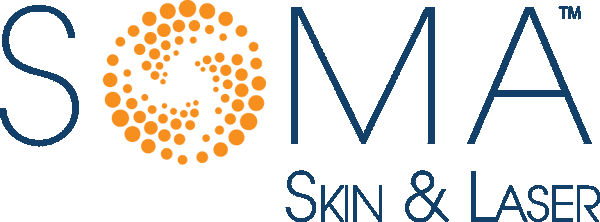Call 973-763-7546 for a Hidradenitis Suppurativa Consultation
What Is Hidradenitis Suppurativa?
Hidradenitis Suppurativa (HS) is a chronic inflammatory skin condition that affects follicles in the body folds, typically under the arms, under the breasts, the groin and genital area, buttocks, and perianal region. The clinical features of HS include recurrent painful inflammatory papules, nodules, abscesses, and draining sinuses. Extensive scarring is often found. HS is sometimes considered with diseases known as acne inversa or a group of disorders known as follicular occlusion diseases. HS significantly impairs quality of life due to both physical and psychological reasons. HS is not considered an infection. It is considered an inflammatory disease and to be the result of dysregulated immunity.
Who Gets Hidradenitis Suppurativa?
HS is not uncommon, with a prevalence of 1 to 4% reported. It is more common in women than men. Many patients report a family history. It is also associated with smoking and obesity. The typical onset of HS is in the early 20’s.
What Is The Natural Course Of Hidradenitis Suppurativa?
HS is marked by periods of flaring and remission. Disease activity often peaks in the third and fourth decades and wanes in women after menopause.
How Is Hidradenitis Suppurativa Diagnoses?
HS is primarily a clinical diagnosis made by an experienced dermatologist. It requires identifying lesions of a typical morphology in a typical distribution in a chronic relapsing course. Diagnoses is often delayed when seen by non-specialists, who may confuse it with infection.
Is Hidradenitis Suppurative An Infection?
The role of bacteria in causing HS is not fully understood; HS is thought to be inflammatory and not infectious. However, secondary infection and colonization is common and may require antibiotic treatment.
With What Can Hidradenitis Suppurative Be Confused?
HS can be confused with an infection such as an abscess caused by S. aureus or other bacteria. The sinuses and fistulas of Chrohn’s Disease can also resemble HS. Hailey-Hailey disease also presents with lesions in a similar distribution, but the lesions of Hailey-Hailey are plaques, erosions and vesicles and not nodules and sinuses.
How Is Hidradenitis Suppurative Treated?
There is no cure for HS, and treatment is focused on reducing the severity and frequency of recurrences. Many treatments do not have strong evidence from large randomized clinical trials.
Topical Treatments. Topical antibiotics, such as Clindamycin, have long been a mainstay of treatment. Antibacterial washes, such as Hibiclens or Benzoyl Peroxide, are used as well.
Intralesional Steroids. Acutely inflamed nodules and sinuses can be injected with intralesions kenalog, which can often bring about relief in 24-48 hours.
Incision & Drainage. Aggressive incision and drainage is not advised for HS, but sometimes a fluctuant nodule or abscess will benefit from drainage, which can provide immediate relief from pain and pressure. The use of incision and drainage should be restricted to providing relief from acutely inflamed nodules and abscesses.
Oral Antibiotics. Numerous antibiotics are used to treat HS with variable results. Tetracyclines and the combination of clindamycin and rifampin are commonly used regimens. It is not clear if in these cases if it is the antibiotic or the antinflammatory effect of the medication which is paramount.
TNF blockers. Adalimumab has recently been approved by the U.S. FDA for the treatment of HS . This approach addresses the presumed inflammatory etiology of HS.
Other Treatments for HS. Many other drugs have been tried and reported on in case studies or small numbers of patients. Isotretinoin, acitretin, dapsone, cyclosporine, colchicine and prednisone are all second-line therapies.
Surgery. Local and wide excisions have a role in removing diseases tissues, but the morbidity and scarring can make the procedures challenging. Local excisions can be helpful, but are associated with a high rate of disease recurrence. Wide excisions can provide a more durable result, but may require grafting and reconstruction. Deroofing can be used to treat individual sinus tracts.
Lasers. Nd:YAG laser has been used to treat HS, presumably by destroying or damaging the pilosebaceous unit. CO2 laser has been used as well to ablate affected tissue, which is then allowed to heal by second intention.
Adjuvant Treatments. Weight loss, smoking cessation, glucose control, pain management, and addressing psychological factors should be addressed as well.
Call 973-763-7546 to schedule a consultation for Hidradenitis Suppurativa today
